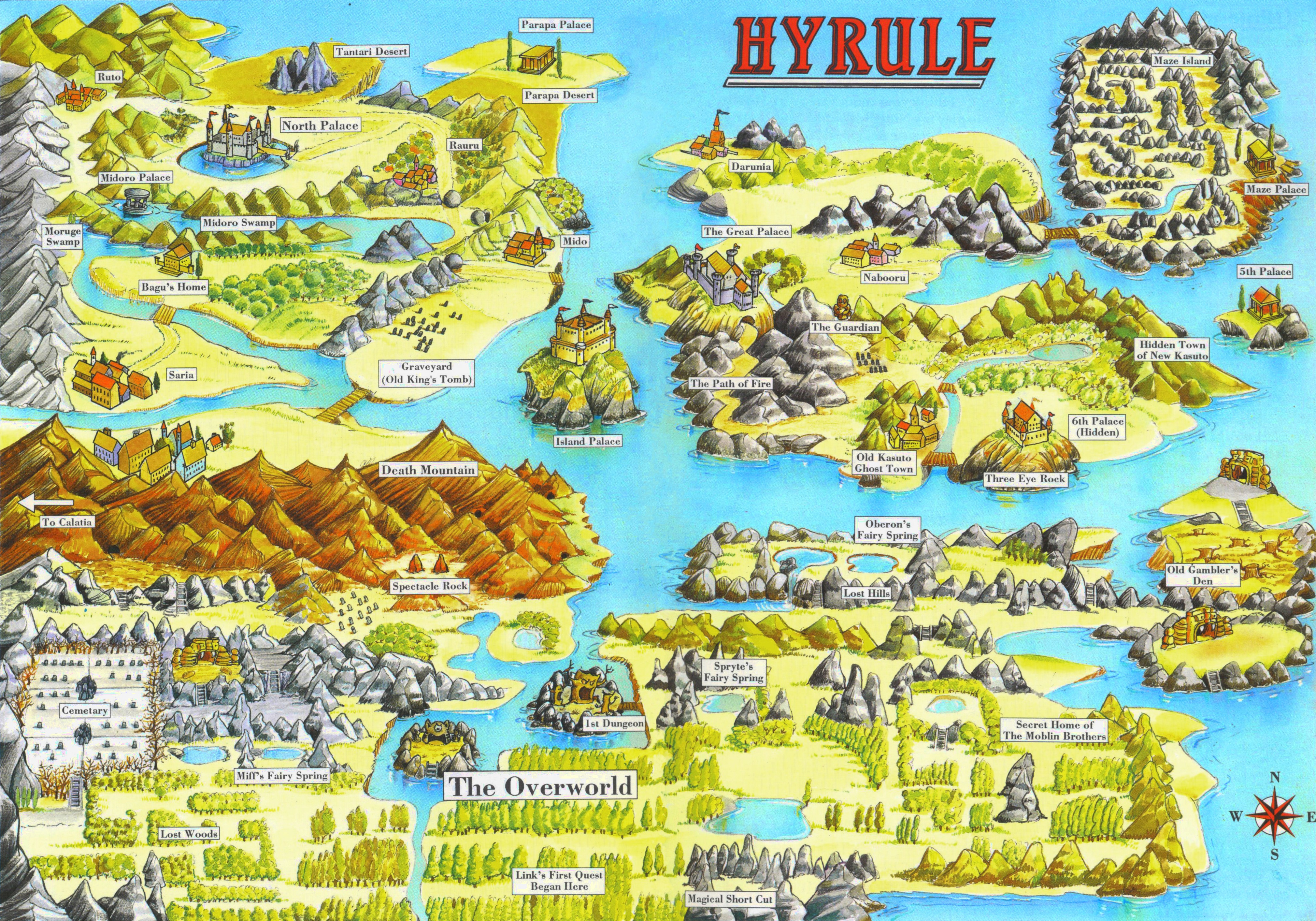
-| ARTISTIC MAP |-
This is where I got the whole idea for doing the quest. It's from the 1990 Zelda comic book, that had eventually been declared non-canon (a little about that below). I didn't have the comic, but I remember having a fold-up poster of it from somewhere. I based the entire overworld on this map.
Just an odd note, after picking where I wanted Kakariko Village to be, I noticed something. Rotate the map 90 degrees clockwise and take a look at the location of the lost woods, death mountain, and kakariko village to the great palace. It's similar to Link to the Past, I assume completely by coincidence.
Now for the scale. Let's skip the fact that duplicating the Zelda 1 overworld exactly has been done X number of times. Building the Zelda 2 world with all the towns was completely impossible with a single overworld map. I considered using four maps for the overworld, but I decided pretty quickly that I would need more than that to build proper villages.
At that point, I embraced nine overworld maps. I knew it was an absurd undertaking, and I wasn't sure how it would be taken. But I was determined to make an overworld as accurate to this map as possible. There were two things that I think made such as big quest workable, although I like to think of three.
First is the world map, which is an additional 6x6 overworld that you unlock as you progress. Each overworld map was divided into four equal quarters, and each quarter is a single screen on the world map. That also means each quarter of the overworld has exactly one warp to the world map. The world map was a more elegant solution to fast travel than the whistle whirlwind (which also still works), and meant you could avoid backtracking the vast distances in the quest. Particularly useful was the quick access to the towns that have shops.
Second involves the overworld districting, but not names on a map. The nearly fifty overworld districts, combined with more than two dozen dungeons, meant I could populate the game with more than ninety different songs. I decided to go with old video games, although I admit a few weren't so old. Aside from about a dozen song suggestions by other people (noted in Nine Village's credits), I picked or found all the songs. I wish I still had a list, but oh well. Whatever the case, the ever changing music selection was a big part of what made this quest memorable.
I'm less certain about the third, but it's this website and the whole walkthrough. It was unheard of to set up a walkthrough for a zelda classic quest in 2008. The walkthrough today is improved from the original, but the fully-labeled overworld and dungeon maps were always here, as were the item checklists, the special maps like the lost woods, and the text descriptions of where to go next and how to beat each dungeon. It might not have meant much to most people, but I'm sure there were a few people who were lost and ready to give up on the quest entirely, and the walkthrough was a lifeline.
*The Legend of Zelda comic books (1990-1991) produced by Valiant (there have been so many Zelda comics since then, you have to search by date or by producer) were meant to work with Zelda 1 and 2, and with the godawful Zelda cartoon show. Even then, Zelda was a warrior princess, not the damsel in distress in Zelda 1. She went with Link on dangerous adventures, and even had to rescue him. The comics were declared non-canon. I can see two completely opposing views to this. On the one hand, the Zelda 1 and Zelda 2 are the end of the timeline according to the official canon, so anything that happens after Zelda 2 doesn't change what happens. On the other hand, what little I saw of it looked really campy, and if it's like the cartoon then Nintendo should avoid associating with it at all costs. Also, the comic might have had lore that contradicted the official canon, and they might someday want to continue from the end of Zelda 2 (although I beat them to it) without worrying about these weird little side stories.
Main Page Go back to the home
page of the walkthrough.